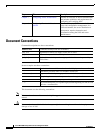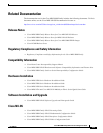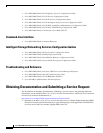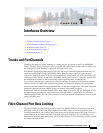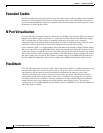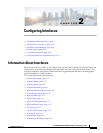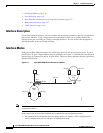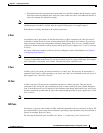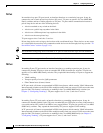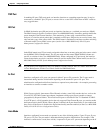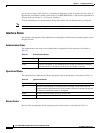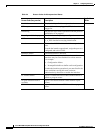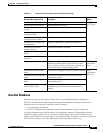
2-2
Cisco MDS 9000 Family NX-OS Interfaces Configuration Guide
OL-29284-01, Release 6.x
Chapter 2 Configuring Interfaces
Information About Interfaces
• Port Group Monitor, page 2-16
• Local Switching, page 2-16
• Slow Drain Device Detection and Congestion Avoidance, page 2-17
• Management Interfaces, page 2-17
• VSAN Interfaces, page 2-18
Interface Description
For the Fibre Channel interfaces, you can configure the description parameter to provide a recognizable
name for the interface. Using a unique name for each interface allows you to quickly identify the
interface when you are looking at a listing of multiple interfaces. You can also use the description to
identify the traffic or the use for that interface.
Interface Modes
Each physical Fibre Channel interface in a switch may operate in one of several port modes: E port, F
port, FL port, TL port, TE port, SD port, ST port, and B port (see
Figure 2-1). Besides these modes, each
interface may be configured in auto or Fx port modes. These two modes determine the port type during
interface initialization.
Figure 2-1 Cisco MDS 9000 Family Switch Port Modes
Note Interfaces are created in VSAN 1 by default. See the Cisco MDS 9000 Family NX-OS Fabric
Configuration Guide.
Each interface has an associated administrative configuration and an operational status:
• The administrative configuration does not change unless you modify it. This configuration has
various attributes that you can configure in administrative mode.
N port
F port
Public
loop
loop
E port E port
FL port
NL port NL port
NL port NL port
p
TL port
ISL lin k
79528
Private



